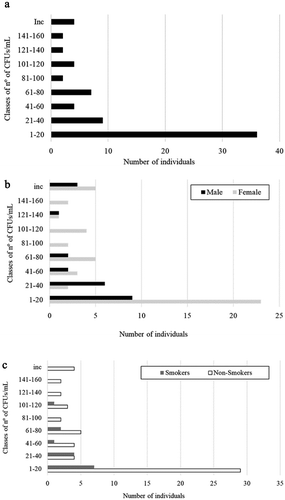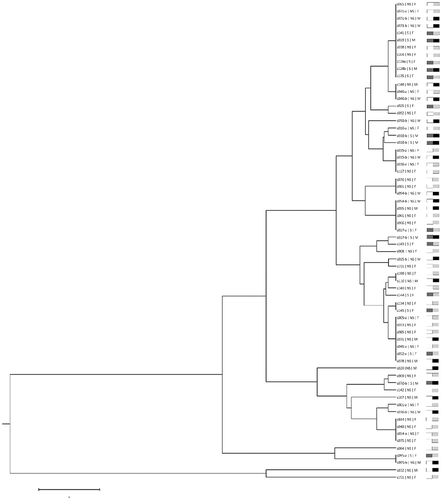Figures & data
Figure 1. Distribution of the total individuals (A), males and females (B), and smokers and non-smokers (C) according to classes of yeast CFUs/mL in the saliva.

Table 1. Number and percentage of individuals with different colonization patterns in the oral cavity of the study subjects.
Figure 2. GeneScan profile of the most frequent CAI genotype (21–25). Electropherogram of PCR products obtained from a strain isolated from participant S019, showing allele 21 (213 base pairs) and allele 25 (225 base pairs).

Table 2. Individuals with different C. albicans CAI genotypes.
Table 3. Candida albicans CAI genotypes and species identified in the couples.
Figure 3. Dendrogram clustering C. albicans isolates according to their CAI genotype. S: Smoker; NS: non-smoker, F: Female, M: Male. Smokers/Male; Smokers/Female; Non-smokers/Male; Non-smokers/Female.

Table 4. Comparison of the genotypes found in the first and in the second sampling performed approximately one year later.
